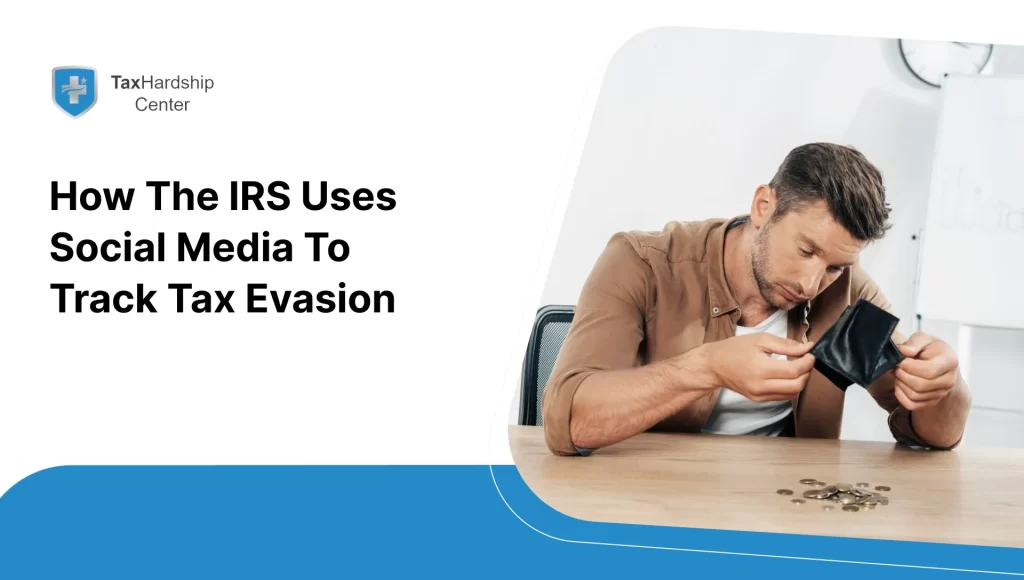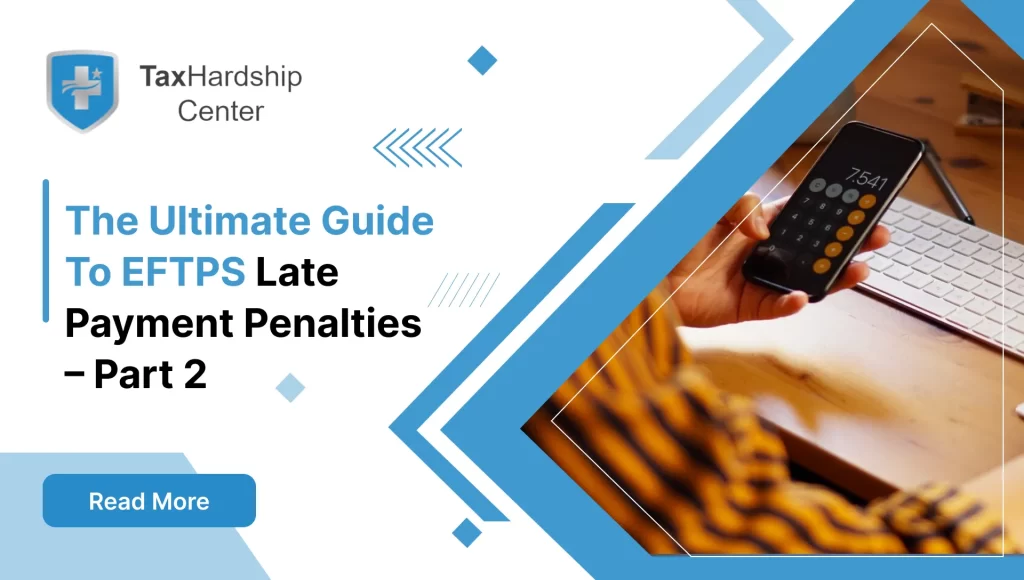Understanding tax debt and the options available to help your business address it is essential in managing business finances. Tax debt can be overwhelming, but with the right strategies, businesses can navigate the complexities of IRS tax liabilities and find relief through various programs designed to help companies stay afloat while paying off their tax debts.
Before we dive in, are you struggling with overwhelming business tax debt? You’re not alone. At the Tax Hardship Center, we specialize in helping businesses like yours find relief. Our team of experts can guide you through solutions like installment plans, offers in compromise, and more. Schedule a free consultation today and breathe a sigh of relief!
Navigating Business Tax Debt Relief: Options for Entrepreneurs and Sole Proprietorships
Managing business tax debt can significantly challenge entrepreneurs and sole proprietorships. However, multiple avenues are available to address and reduce tax liabilities. Understanding these options can help business owners make informed decisions and find suitable pathways to overcome their tax-related financial difficulties.
1. Offer in Compromise: A Viable Path to Reduced Tax Debt
An Offer in Compromise (OIC) represents a tax settlement option that empowers businesses to negotiate with the IRS to settle tax debts for less than the total amount. This option is applicable under two main conditions:
- Doubt about Collectibility: The business can demonstrate that its assets and income must be sufficient to pay the entire tax debt.
- Doubt as to Liability: There is a genuine dispute regarding the validity or amount of the assessed tax debt.
To pursue an OIC, a meticulous submission of detailed financial information and supporting documentation is essential to establish the business’s inability to pay the total amount. If the OIC is accepted, it can lead to substantial tax relief and a fresh financial start for the company.
2. IRS Fresh Start Program: Easing the Tax Debt Burden
The IRS Fresh Start Program was instituted to help more taxpayers and small businesses gain relief from burdensome tax debts. It encompasses several vital components to make tax repayment more manageable:
- Streamlined Installment Agreements: These allow small businesses with $25,000 or less in tax debt to establish a repayment plan over six years without extensive financial disclosures.
- Tax Lien Threshold Increase: The program increased the tax debt threshold for filing a Notice of Federal Tax Lien, providing more breathing room for businesses.
3. Structured Payment Arrangements: Customized Installment Agreements
Payment arrangements, particularly installment agreements, are designed to divide the tax debt into smaller, manageable payments spread over an agreed-upon period. This allows businesses to maintain operational continuity while satisfying their tax obligations. Different installment agreements exist depending on the amount owed and the business’s capacity to pay, including short-term and long-term payment plans.
4. First-Time Penalty Forgiveness: Relief for Compliant Taxpayers
Penalty abatement may be extended to businesses that have incurred penalties for the first time due to a failure to file or pay taxes on time. This forgiveness program is typically offered to those with a previous record of compliance, and it can alleviate the added financial strain of penalties on top of the actual tax debt. Businesses generally have to show that the failure to comply was due to reasonable cause and not willful neglect.
5. Understanding the Statute of Limitations: A Time Limit on Collections
The IRS has a 10-year window, the Collection Statute Expiration Date (CSED), to collect outstanding tax debts. After this statute of limitations expires, the tax debt may be considered legally unenforceable, barring the IRS from further collection actions. However, certain events, like submitting an OIC or filing for bankruptcy, can stop or extend the CSED, prolonging the IRS’s ability to collect the debt.
Tax Hardship Center: Your Partner in Resolving Business Tax Debt
Struggling with business tax debt can be overwhelming, but Tax Hardship Center offers hassle-free assistance to get your business back on track. Our team of experts simplifies the complex process, guiding you through every step with precision and care. With a 14-day money-back guarantee, you can trust us to provide practical solutions or receive a full refund. Book a free consultation today to explore how our tailored strategies can transform your tax experience. No matter where your business operates in the United States, our nationwide coverage ensures that our commitment to excellence follows you.
Debt Forgiveness Considerations and the Statute of Limitations
While the IRS provides programs to lessen or restructure tax debt for more manageable payments, complete debt forgiveness is atypical. Nonetheless, in extraordinary situations, such as when a business faces insolvency, the IRS can forgive or write off the debt, acknowledging the incapacity to recover the entire tax amount.
The statute of limitations on tax debt is generally set at ten years from the assessment date. However, specific actions by the taxpayer, such as pursuing an OIC or declaring bankruptcy, can pause or lengthen this timeframe, thus altering the CSED and potentially affecting the overall strategy for handling the tax debt.
Debt Forgiveness by the IRS: Understanding the Scope and Limitations
When faced with the question, Does the IRS forgive tax debt? It’s essential to grasp the IRS’s capabilities and limitations about debt forgiveness. Indeed, the IRS offers a variety of programs and initiatives to assist taxpayers with mitigating or reorganizing their tax liabilities to facilitate more manageable payments. These initiatives are debt relief programs to aid those with genuine financial hardship. Nonetheless, complete forgiveness of tax debts is an infrequent occurrence.
The IRS may consider writing off the debt under specific scenarios, such as a taxpayer’s insolvency. Debt forgiveness, in the case of insolvency, is contingent upon the taxpayer’s inability to fully satisfy their tax liabilities, even after liquidating all assets. This kind of relief is pursued through detailed substantiation of financial hardship to the IRS.
Statute of Limitations: The Timer on Tax Debt Collection
Concerning the duration the IRS has to enforce tax debt collection, the standard statute of limitations spans a decade to 10 years from the date the tax liability was formally assessed. It is important to note that this time frame is not absolute and can experience extensions under various circumstances. For instance, if a taxpayer declares bankruptcy or submits an offer in compromise, the statute of limitations may be prolonged, effectively pausing the countdown while these matters are resolved.
Negotiation Channels with the IRS: Tax Liability Resolution
The IRS is amenable to discussions with taxpayers to determine suitable ways to handle outstanding tax debts. The IRS demonstrates its willingness to find common ground by considering an individual’s or business’s financial standing by offering negotiation avenues such as the Offer in Compromise and installment agreements.
For example, the Offer in Compromise program allows taxpayers to settle their tax obligations for a lesser sum than what is owed if the evidence confirms that full payment would create significant economic hardship or a genuine dispute regarding the tax liability.
Understanding Payroll Taxes for Small Businesses
Payroll taxes are a component of a small business’s tax obligations. These taxes are the deductions from employees’ wages for federal purposes such as Social Security and Medicare—commonly known as FICA taxes—and the corresponding employer’s contribution to these social programs. Staying compliant with payroll tax obligations is crucial as these are a fundamental element of an employee’s trust fund taxes, which the IRS enforces rigorously.
Addressing Noncompliance: Understanding the Impact of IRS Penalties on Small Businesses
Small businesses may face stringent penalties imposed by the Internal Revenue Service (IRS) when they fail to meet their tax filing or payment obligations. These penalties are designed to encourage compliance and deter negligence regarding tax responsibilities. Small business owners must understand the potential repercussions of noncompliance to avoid the financial strain that these penalties can impose.
Failure-to-File Penalty: The Cost of Delayed Tax Returns
One of the primary penalties the IRS levies on small businesses for noncompliance is the failure-to-file penalty. This penalty is applied when a company needs to file its required tax returns by the due date, including extensions. The penalty is typically assessed at 5% of the unpaid taxes for each month or part of a month that a tax return is late. The accumulation of this penalty starts from the deadline of the tax return and continues to accrue each month until it caps at 25% of the total unpaid tax liability.
For example, if a small business owes $10,000 in taxes and fails to file its return by the due date, it would incur an initial penalty of $500 for the first month. If the return remains unfiled for five months or longer, the penalty will reach the maximum of $2,500.
Failure-to-Pay Penalty: The Consequences of Unpaid Taxes
In addition to the failure-to-file penalty, small businesses may incur a failure-to-pay penalty if they do not pay the taxes reported on their filed returns by the due date. Unlike the failure-to-file penalty, the failure-to-pay penalty is generally a more modest 0.5% of the unpaid taxes for each month or part of a month that the payment is late. This penalty can continue to be charged each month until it reaches the 25% maximum.
For instance, if the same small business mentioned above files its tax return on time but does not pay the $10,000 tax bill, it would be subject to a monthly penalty of $50, amounting to $600 over 12 months if the total amount remains unpaid.
Combined Penalties for Late Filing and Late Payment
It’s important to note that if both the failure-to-file and failure-to-pay penalties apply in the same month, the total penalty for that month is reduced by the amount of the failure-to-pay penalty. If a tax return is filed over 60 days after the due date, the minimum failure-to-file penalty is either $435 (as of 2020) or 100% of the tax required to be shown on the return.
Exceptions and Penalty Relief
The IRS may relieve penalties if the business can show reasonable cause for failing to file or pay on time. Additionally, small businesses that qualify as first-time penalty abatement (FTA) candidates having a clean penalty history over the past three years may request a reduction of specific penalties.
IRS Enforcement Actions: Liens and Levies
For small businesses grappling with unpaid taxes, the consequences of inaction can escalate to legal claims against their property. The IRS can impose a tax lien if a company fails to establish a payment plan or resolution for its tax debt. A tax lien is a legal claim against the assets of a business, essentially signaling to creditors the government’s right to its property.
If further action is required, the IRS may resort to a levy, permitting the actual seizure of assets such as bank accounts, receivables, and other property to fulfill the tax debt. Levies can severely impact a business’s operation and financial stability, making it imperative that companies seek arrangements to clear their tax debts before such measures become necessary.
Conclusion:
Navigating business tax debt can be daunting, but entrepreneurs and sole proprietors can breathe easier with the right strategies and understanding of available relief options. From Offers in Compromise to installment agreements and penalty abatement, there are avenues to address tax liabilities and find relief tailored to business needs. Moreover, with programs like the IRS Fresh Start initiative and a grasp of the statute of limitations, businesses can manage their tax debt while maintaining operational continuity. By staying informed and proactive, companies can overcome tax-related financial challenges and pave the way for a more stable financial future.
Why Tax Hardship Center?
1. Hassle-Free Assistance:
Say goodbye to sleepless nights and endless tax-related stress. At the Tax Hardship Center, we believe in simplifying the complex. Our team of experts is dedicated to guiding you through every step of the process, ensuring that your tax concerns are met with precision and care.
2. 14-Day Money Back Guarantee:
We’re so confident in our ability to ease your tax worries that we offer a 14-day money-back guarantee. If, for any reason, you’re not satisfied with our service, we’ll gladly refund your investment. Your peace of mind is our top priority!
3. Free Consultation:
Are you curious about how we can transform your tax experience? Book a free consultation now! Our team will assess your situation, answer your questions, and provide free insights tailored to your needs.
4. Nationwide Coverage:
No matter which corner of the United States you call home, the Tax Hardship Center covers you. We proudly serve all 50 states, bringing our expertise to your doorstep. Wherever you are, our commitment to excellence follows.
FAQs (Frequently Asked Questions):
1. How can I settle my business tax debt for less than the total amount owed?
An Offer in Compromise (OIC) allows businesses to negotiate with the IRS to settle tax debts for less than the total amount owed, provided they meet specific criteria demonstrating financial hardship or a genuine dispute regarding the tax liability.
2. What is the IRS Fresh Start Program, and how can it help my business?
The IRS Fresh Start Program offers streamlined installment agreements and increased tax lien thresholds to make tax repayment more manageable for small businesses. It provides relief from burdensome tax debts and facilitates smoother financial management.
3. What are the consequences of failing to file or pay taxes on time for my small business?
Failing to file or pay taxes on time can result in penalties imposed by the IRS, including the failure-to-file and failure-to-pay penalties. If addressed, these penalties can accrue over time, leading to additional financial strain.
4. Is relief available for penalties imposed by the IRS on my small business?
Yes, the IRS may provide penalty relief under certain circumstances, such as demonstrating reasonable cause for failing to file or pay taxes on time. Additionally, first-time penalty abatement (FTA) candidates with a clean penalty history may qualify for a reduction in specific penalties.
5. What are tax liens and levies, and how do they affect my business?
Tax liens are legal claims against a business’s assets by the IRS, signaling its right to the property to satisfy tax debts. If unresolved, the IRS may resort to levies, allowing the seizure of assets like bank accounts and property. These enforcement actions can significantly impact a business’s operations and financial stability, emphasizing the importance of resolving tax debts promptly.








